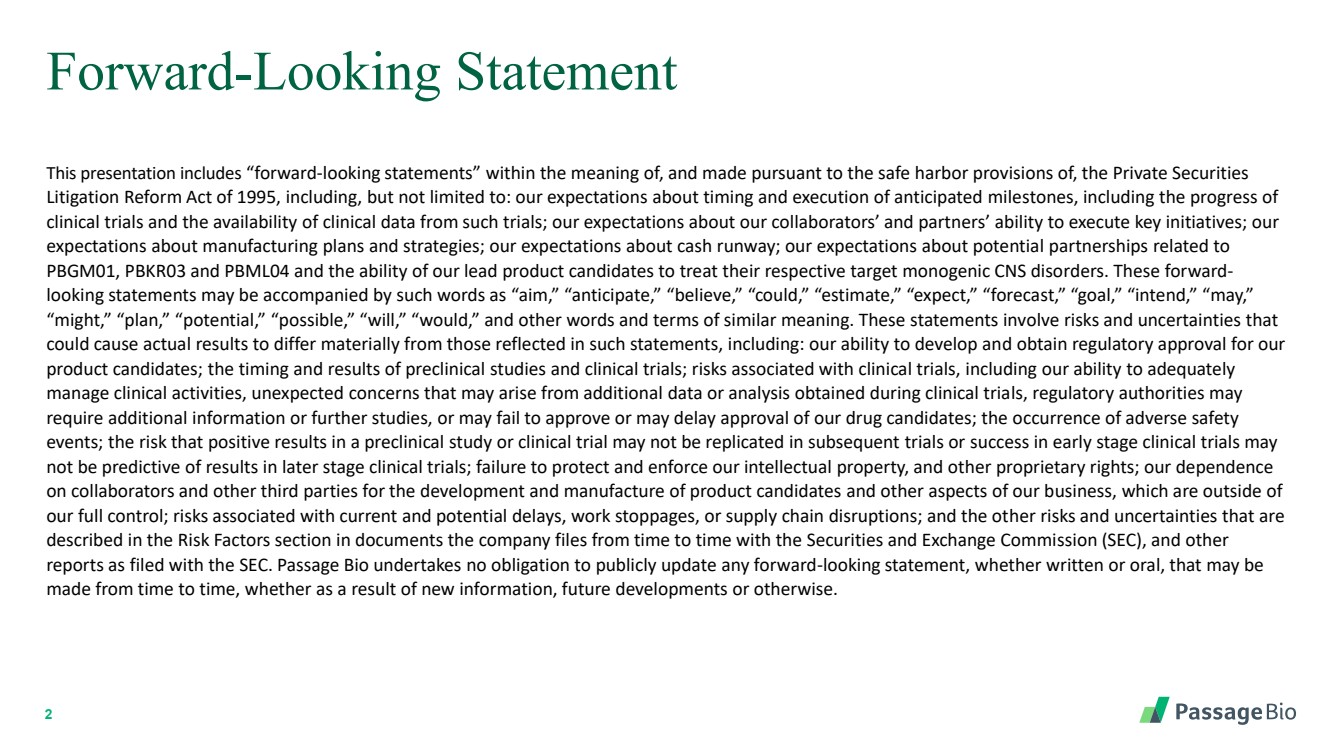
| 2
Forward-Looking Statement
This presentation includes “forward-looking statements” within the meaning of, and made pursuant to the safe harbor provisions of, the Private Securities
Litigation Reform Act of 1995, including, but not limited to: our expectations about timing and execution of anticipated milestones, including the progress of
clinical trials and the availability of clinical data from such trials; our expectations about our collaborators’ and partners’ ability to execute key initiatives; our
expectations about manufacturing plans and strategies; our expectations about cash runway; our expectations about potential partnerships related to
PBGM01, PBKR03 and PBML04 and the ability of our lead product candidates to treat their respective target monogenic CNS disorders. These forward-looking statements may be accompanied by such words as “aim,” “anticipate,” “believe,” “could,” “estimate,” “expect,” “forecast,” “goal,” “intend,” “may,”
“might,” “plan,” “potential,” “possible,” “will,” “would,” and other words and terms of similar meaning. These statements involve risks and uncertainties that
could cause actual results to differ materially from those reflected in such statements, including: our ability to develop and obtain regulatory approval for our
product candidates; the timing and results of preclinical studies and clinical trials; risks associated with clinical trials, including our ability to adequately
manage clinical activities, unexpected concerns that may arise from additional data or analysis obtained during clinical trials, regulatory authorities may
require additional information or further studies, or may fail to approve or may delay approval of our drug candidates; the occurrence of adverse safety
events; the risk that positive results in a preclinical study or clinical trial may not be replicated in subsequent trials or success in early stage clinical trials may
not be predictive of results in later stage clinical trials; failure to protect and enforce our intellectual property, and other proprietary rights; our dependence
on collaborators and other third parties for the development and manufacture of product candidates and other aspects of our business, which are outside of
our full control; risks associated with current and potential delays, work stoppages, or supply chain disruptions; and the other risks and uncertainties that are
described in the Risk Factors section in documents the company files from time to time with the Securities and Exchange Commission (SEC), and other
reports as filed with the SEC. Passage Bio undertakes no obligation to publicly update any forward-looking statement, whether written or oral, that may be
made from time to time, whether as a result of new information, future developments or otherwise. |